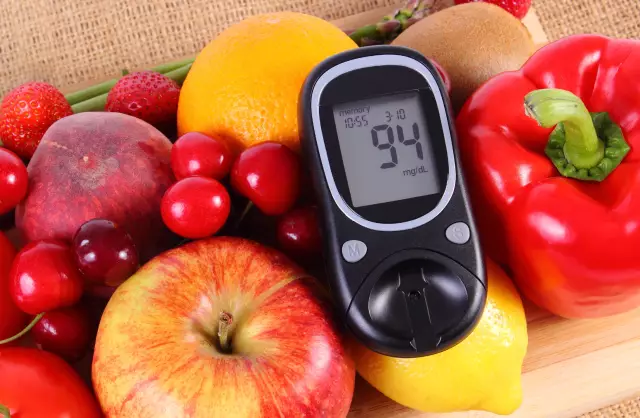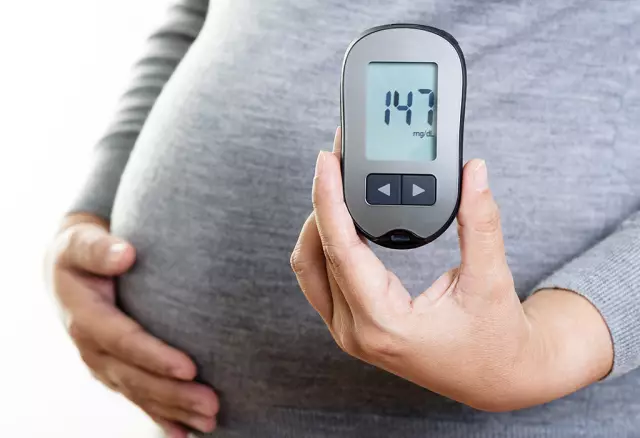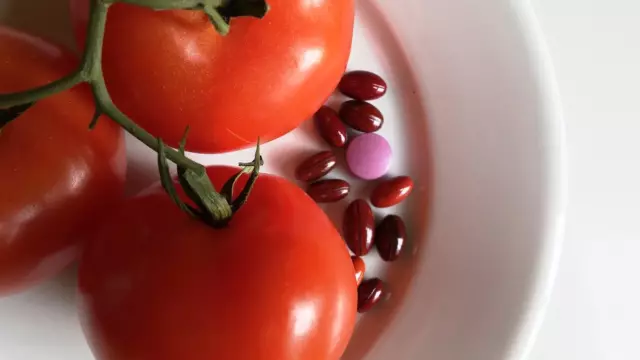- Author Rachel Wainwright [email protected].
- Public 2023-12-15 07:39.
- Last modified 2025-11-02 20:14.
Diet for diabetes

Diabetes mellitus is a chronic metabolic disorder that is always accompanied by an increase in blood sugar levels. When the concentration of this substance exceeds physiological values, then it begins to have a toxic effect. Diabetic coma and late complications (damage to the eyes, kidneys, heart, nervous system, feet) may develop. There are several reasons for diabetes mellitus, accordingly, different forms of diabetes are distinguished: type 1, type 2 of the disease, gestational and other types of diabetes. The treatment of any diabetes mellitus is based on dietary nutrition. The diet for diabetes mellitus must be followed by the patient. With blood sugar, the diet corresponds to the treatment table number 9.
Blood sugar diet
A diet for diabetes is a proper diet, which must be followed constantly after the diagnosis is made. In any type of diabetes, the calorie content of food, its composition, the amount of carbohydrates and fats are always controlled. In type 2 diabetes, diet is sometimes the only and sufficient treatment.
Calorie diet for diabetes
Food brings energy to the body for the work of all cells in the form of calories. To maintain a healthy body weight, it is important for a diabetic patient to get as many calories as he spends. You can use food calorie tables and product labels to find out the calorie value of a food. The calorie needs of all people are different. It depends on age, gender, body weight, physical activity. Patients with diabetes and obesity need relatively few calories. If there is no heavy and prolonged physical activity during the day, then men patients need about 2000 kilocalories per day, and women - 1200 kilocalories per day. In the treatment of type 2 diabetes mellitus, the diet is based primarily on restricting the calorie content of food. If the patient is not overweight,then there is no strict need to take into account the calorie content of food.
Carbohydrates in the diet for diabetes
Food contains carbohydrates, fats, proteins, vitamins and microelements. Of course, all of these ingredients are essential for proper metabolism. Food carbohydrates have the greatest effect on blood sugar. Some carbohydrates have a short chemical structure. These are monosugar - glucose, fructose, sucrose. These carbohydrates are absorbed very quickly. After the ingestion of monosaccharides, blood sugar rises in the next minutes. All confectionery products, sugar, honey, fruit juice, bananas, grapes, dried fruits contain many monosugar products. Other carbohydrates are more complex and have a longer chemical chain. These carbohydrates are called polysaccharides. They increase blood sugar 1-2 hours after ingestion. Polysaccharides are found in large quantities in cereals, pasta, potatoes,dairy and flour products. This food should be the main source of calories for everyone, including those with diabetes. A diet with high blood sugar involves the intake of foods with carbohydrates daily and at each main meal (breakfast, lunch, dinner). You can eat polysaccharides and not monosaccharides. This means that with sugar in the blood, you can porridge, bread, potatoes, rice, pasta, but nothing sweet. Of course, polysaccharides cannot be eaten in very large quantities. In addition, each meal should contain approximately the same amount of carbohydrates if treated with tablets. If a patient with diabetes is treated with insulin, then the amount of carbohydrates can be more or less (optional). To calculate the amount of carbohydrates in food, a special system of bread units is used.10-12 grams of carbohydrates are considered to be one unit. So many polysaccharides contain, for example, one piece of bread (25 grams), two tablespoons of porridge (50 grams), a glass of milk (250 grams). For one meal, you need to eat at least 2 bread units. The more units are eaten, the higher blood sugar will rise after eating.
Diet fat with sugar

In diabetes mellitus, not only carbohydrate metabolism is disturbed, but also fat metabolism. This can lead to high blood cholesterol levels, which can damage the arteries. As a result, diabetic patients develop late complications - disorders of blood supply to the lower extremities, heart, and brain. In order to prevent such consequences, the amount of fat in the food is limited in the diet with high sugar. The first step is to reduce the amount of animal fat. It is necessary to give up fatty meat, lard, sausages, semi-finished products, sour cream, mayonnaise, butter. Only 2 eggs can be eaten per week. Of dairy products, it is advisable to give preference to non-fat types of milk, cottage cheese, kefir. Vegetable fats should also be taken into account and limited in the diet for diabetes. The thing is,that vegetable oil is the most high-calorie type of food (100 grams contains about 900 kilocalories). Therefore, for problems with weight, you should use no more than 1-2 tablespoons of oil per day. Seeds and nuts contain a lot of fat. They should only be eaten occasionally. With sugar in the blood, the fat diet is especially strict in overweight patients.
Protein foods in the diet for diabetes
Proteins are needed by the body to create and maintain cells in all tissues in a functioning state. Protein food is meat, chicken, fish, cottage cheese. Plant foods, primarily legumes, also contain a lot of protein. For humans, vegetable protein is not complete. Therefore, a vegetarian diet is never recommended for diabetes. So, protein food should be daily in moderation on the table of patients with diabetes. Patients with diabetes mellitus should never follow low-carbohydrate diets containing too much protein (for example, the "Kremlin"). In some situations, it will be necessary to severely limit the amount of protein in food. This can happen with severe complications from the kidneys - chronic renal failure. Sure,a recommendation to reduce the protein content in food can only be given by a specialist.
Sugar substitutes and diet for diabetes
Increased blood sugar will require the elimination of monosaccharides - glucose, sucrose, fructose. Diabetes patients should give up all sweets. But the sweet taste is genetically the most beloved for humans. Moreover, many have a psychological dependence on sweets. Therefore, a diet with sugar in the blood may contain sweeteners. These substances have a sweet taste but do not affect blood sugar. Some of the sweeteners have calories, and some do not. Non-nutritive sugar substitutes do not affect blood sugar or body weight. Such substances are aspartame, saccharin, cyclomate. High-calorie sweeteners (sorbitol, xylitol) and products with their use should be taken into account according to the system of bread units and should be strongly limited in obese patients.
Found a mistake in the text? Select it and press Ctrl + Enter.






